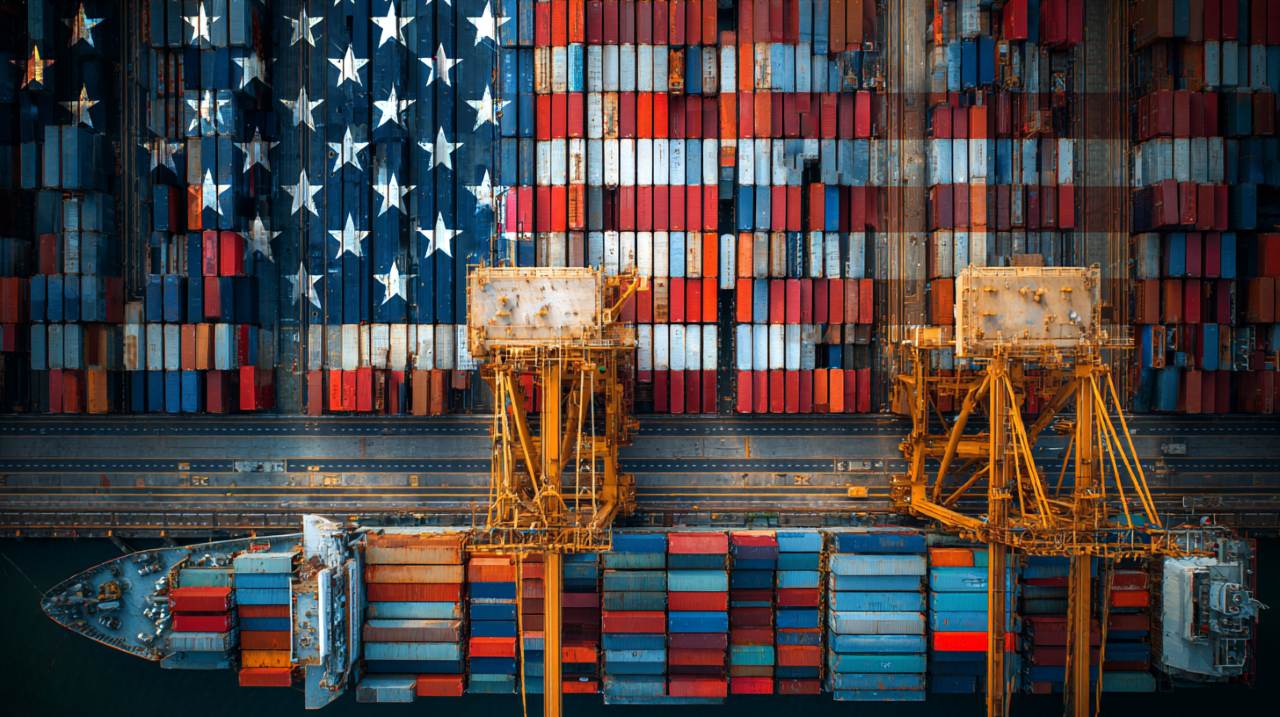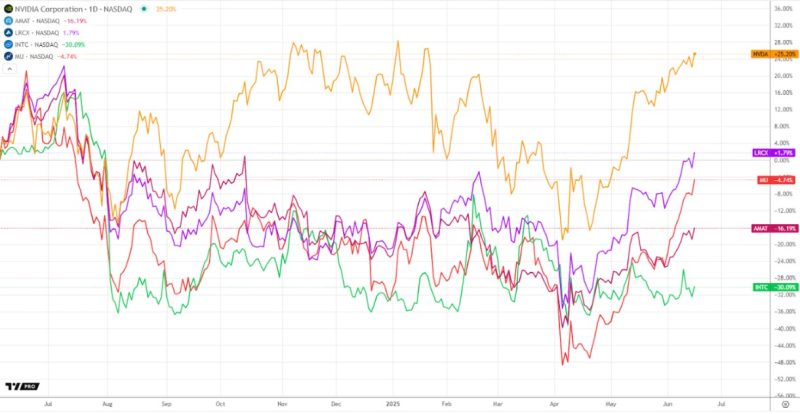
The global technology race, especially in semiconductors and artificial intelligence, is becoming increasingly intense. Export controls are central to the US strategy to curb China’s technological growth.
However, the effectiveness of these measures directly depends on the support from allied nations. The Biden administration has been actively working to synchronize sanctions with key partners, and, as recent statements show, this policy has not only been maintained but also tightened with Donald Trump’s return to the White House.
News about the tightening of export controls and the escalation of the trade war with China has traditionally caused volatility in the markets, especially in the technology sector. Nasdaq futures often become a barometer of this nervousness. Expectations of increased restrictions for key players such as NVIDIA, Applied Materials, or ASML can lead to sharp sell-offs and falling futures. Investors fear lower future profits, disruptions to global supply chains, and a general slowdown in the high-tech sector.
Even under Biden, the United States made persistent attempts to convince South Korea, Japan, and the Netherlands to accept export restrictions similar to those of the United States. Although some progress has been made, full synchronization has not been achieved. The allies fear the loss of the vast Chinese market and Beijing’s retaliatory measures.
Washington openly declares its expectations: global understanding and solidarity in compliance with export control measures. If the allies fail to fully back the United States, the administration is ready to use a powerful lever — the Foreign Direct Product Rule (FDPR). This means that the United States can require mandatory licensing of supplies to China of equipment manufactured in any country in the world, if it includes any amount of US-origin technology or software. The threat of extraterritorial application of US sanctions is a serious argument that can paralyze supply chains for Chinese customers worldwide.
The harsh US export restrictions have hurt their own companies:
- NVIDIA: Among AI chip leaders, it has taken the biggest hit. The loss of access to the vast Chinese market for high-performance graphics processing units (GPUs) for AI and HPC has led to the loss of billions of dollars in revenue.
- Applied Materials, Lam Research, KLA: The most prominent manufacturers of chip manufacturing equipment. Their equipment was directly exported to advanced factories in China.
- Intel, Micron: Although their business model is less directly focused on exporting to China compared to NVIDIA, they are also feeling the effects of sanctions through general industry pressures, supply chain disruptions, and potential Chinese retaliatory measures. Micron, for example, has faced a ban on its products in China’s infrastructure projects.

The idea of dividing the global market into three categories (namely: allies, neutrals, and opponents with different levels of access to technology), discussed earlier, was rejected. The main reason is the enormous risks of destroying the single global semiconductor and high-tech market, leading to chaos, a sharp cost increase, and a slowdown in innovation worldwide.
Trump’s advisors have outlined a dual-track strategy:
- Restricting Chinese access to advanced technologies, especially in AI and semiconductor manufacturing, should be maximally restricted for national security.
- Ensuring that US technologies form the basis for developing AI infrastructure. The goal is to consolidate US leadership in a critical area in the future.
The policy of synchronizing sanctions against China is a powerful but risky weapon for the United States. The pressure on its allies will only increase, especially under a potential Trump administration known for its unilateral approach. The threat of extraterritorial application of the FDPR may force South Korea, Japan, and the Netherlands to make further concessions.
However, the price may widen the global technological gap in the world. American companies, already suffering losses, are forced to look for complex and expensive workarounds. Markets remain sensitive to any news on this front. In the long term, the world is moving toward forming competing technological blocs, which carry the risks of slowing innovation, rising costs for consumers, and a new wave of global economic instability. The success of Trump’s dual strategy will depend not only on the ability to contain China but also on the willingness of the rest of the world to accept US technological leadership unconditionally.
